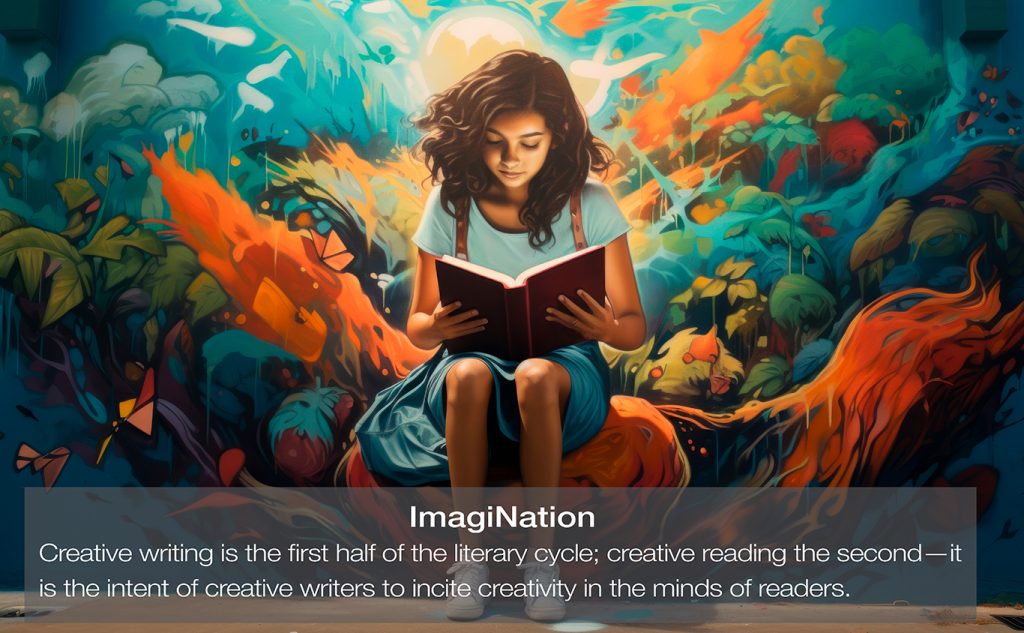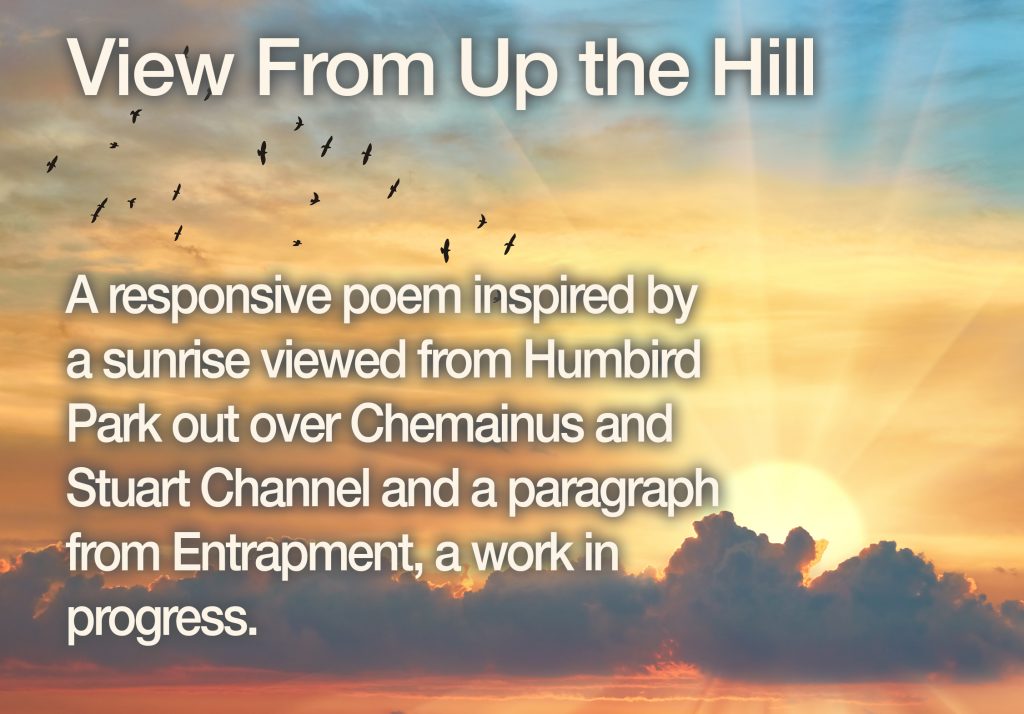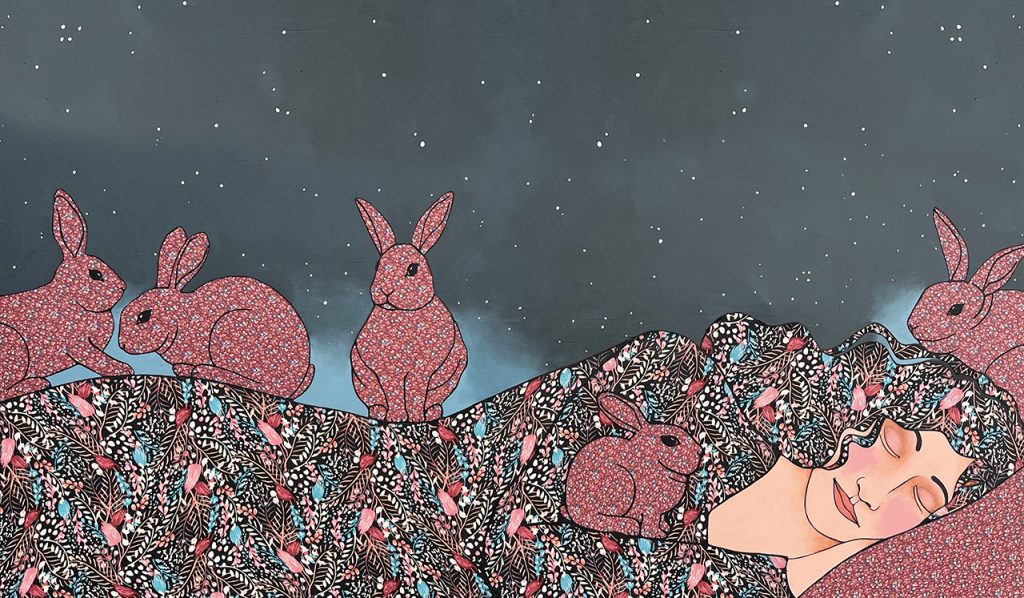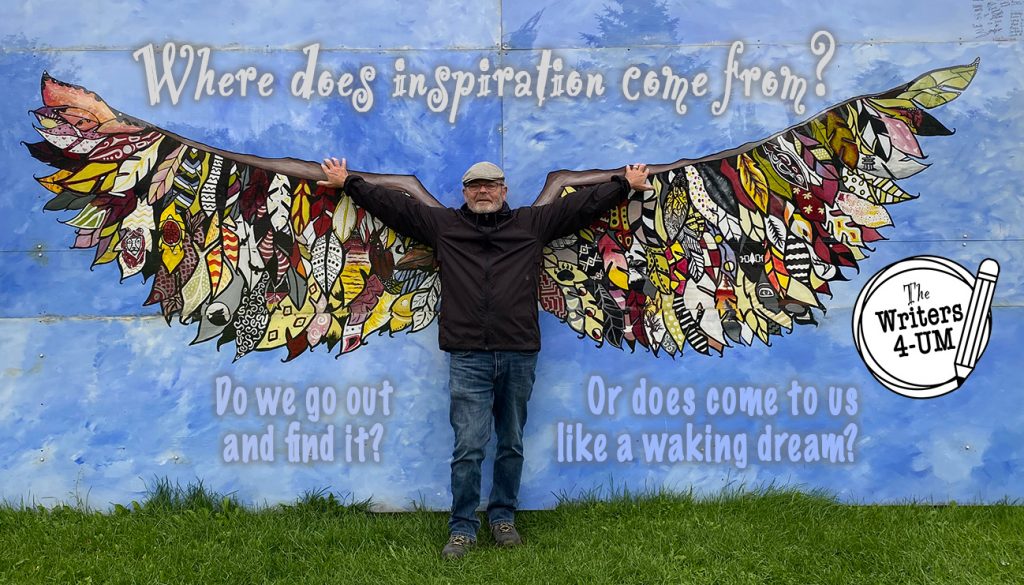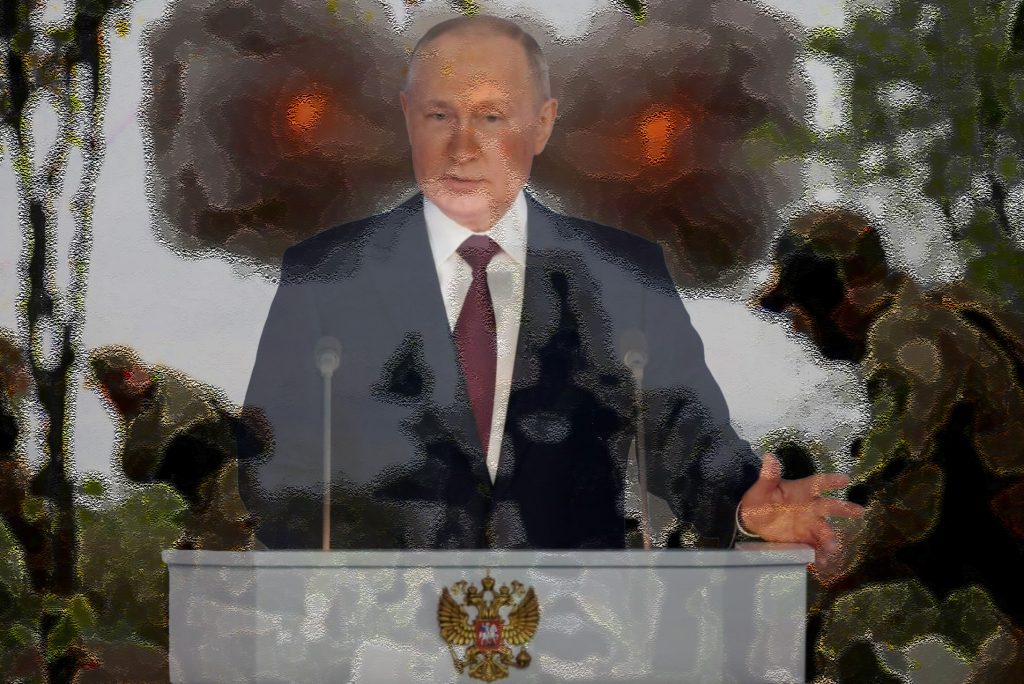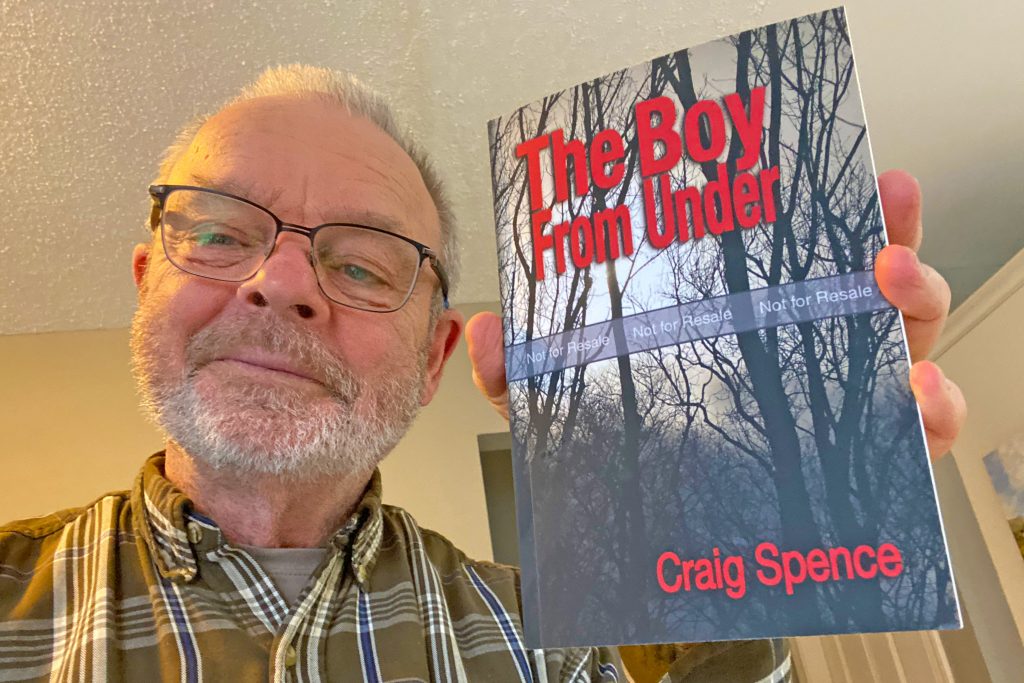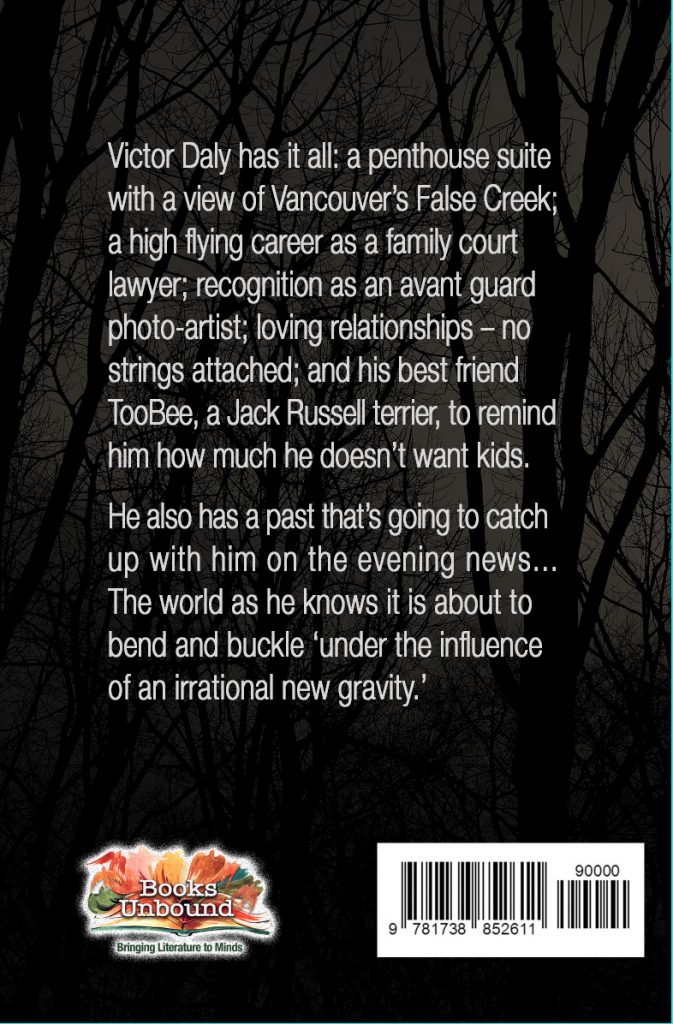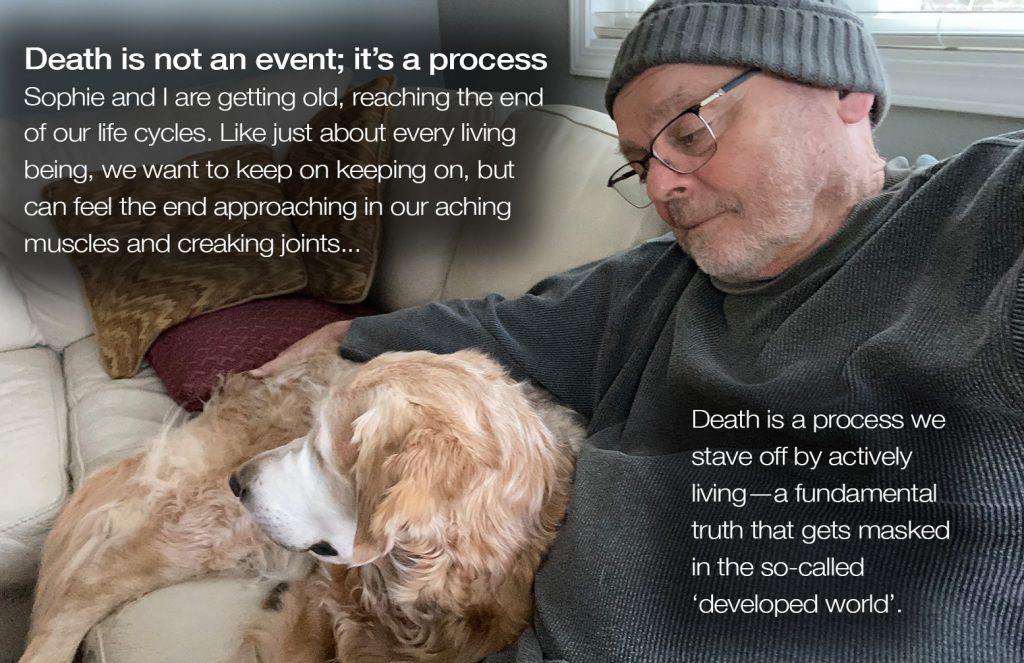
We tend to think of death as a sudden event—the moment we transition from life into… its opposite. In truth, death is a process we stave off every day by living. Which makes life an activity, not a state of being.
If I don’t hunt and eat, I die. If I don’t procreate, my future generations will never be. If I don’t mind my step, I will be killed by a car. Every day we must actively live, or we are likely to meet an untimely end. I must exercise and manage my diet, or my ability to live is compromised—and so it goes.
Death is part of the process of renewal. I, as an individual, make my contribution, then give way as new ideas and modes of living are born. Whole civilizations become artifacts and ultimately particles of dust in the inexhorable cycle of life. Worlds come into and pass out of being.
This perpetual struggle to survive is masked in the comfortable environments of the ‘developed world’. We don’t connect the need to work with the ongoing battle for survival. Ultimately, though, that robs our lives of meaning. We are here to give what we can, while we can.
Life is the convergence of energy, matter, and spirit in conscious, willing being. To me, the best possible life is devoted to bringing joy into the world—as much joy with as much grace as I can muster in my brief span.
